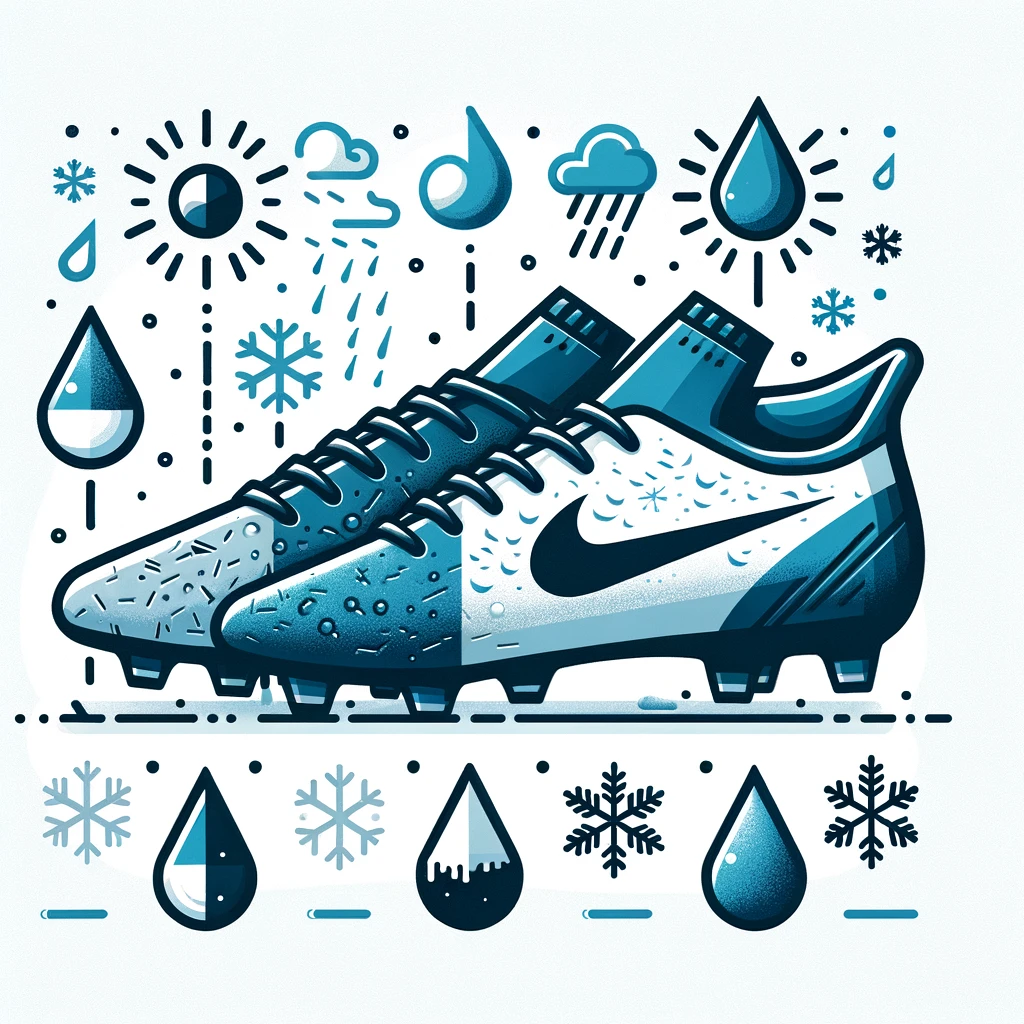Playing soccer in different weather conditions requires not only skill adjustments but also equipment adaptations. This guide will show you how to prepare and modify your soccer cleats to perform optimally in any weather.
Introduction
Whether it’s a wet, muddy field after a rainstorm, a dry, hard ground during a drought, or a cold, frosty pitch in winter, your soccer cleats play a crucial role in how well you can perform. Adjusting your cleats to suit different weather conditions can make a significant difference.
Understanding Cleat Types and Their Uses
Types of Soccer Cleats
- FG (Firm Ground) Cleats: Ideal for dry conditions on well-maintained grass fields.
- SG (Soft Ground) Cleats: Designed for wet and muddy conditions with longer, usually detachable studs.
- AG (Artificial Ground) Cleats: Made for artificial grass surfaces, featuring shorter, more numerous studs.
- HG (Hard Ground) Cleats: Best for hard, dry surfaces, often with a large number of small studs to distribute pressure.
Adapting Cleats to Various Weather Conditions
Wet and Muddy Conditions
- Choose the Right Cleats: SG cleats are best as they provide deeper penetration for better traction.
- Maintenance: Post-game, clean mud off the studs and shoes to prevent damage and maintain performance.
Dry and Hard Conditions
- Cleat Selection: HG or FG cleats work well to prevent discomfort and enhance stability.
- Hydration: Leather cleats can dry out and become stiff. Regularly use a conditioner to keep them supple.
Cold and Frosty Conditions
- Insulation: Consider insulated or lined cleats for warmth.
- Grip Adjustment: Use cleats with good traction to handle the hard, potentially icy surface.
Transitioning Between Surfaces
- Multiple Cleat Sets: If you frequently play in varying conditions, consider having different sets of cleats ready to go.
- Adjustable Studs: Cleats with interchangeable studs can be customized for the specific playing surface of the day.
Tips for Long-Lasting Cleat Care
- Regular Cleaning: Clean cleats after each game, especially if they’re muddy or wet.
- Proper Storage: Store cleats in a dry, cool place away from direct sunlight.
- Regular Inspection: Check for wear and tear regularly, especially the studs.
Frequently Asked Questions (FAQs)
Can I use the same soccer cleats for all weather conditions?
While some cleats are marketed as multi-ground or versatile, it’s generally better to use cleats designed for specific conditions to ensure optimal performance and safety. Using the wrong type of cleat can lead to poor traction and increased injury risk.
How do I switch studs on cleats that have interchangeable options?
To switch studs on cleats with interchangeable options, you typically need a stud wrench. Unscrew the current studs by turning them counterclockwise, then screw in the appropriate studs for your playing conditions by turning them clockwise until tight.
What’s the best way to clean my cleats after playing in mud?
Remove excess mud with a soft brush or cloth. Then, fill a bucket with warm water and a mild detergent, and use a soft brush to clean the cleats gently. Rinse with clean water and let them air dry away from direct heat or sunlight.
How often should I replace my soccer cleats?
The frequency of replacement depends on how often you play and the conditions you play in. As a general rule, inspect your cleats for wear every season and consider replacing them if they show significant wear or if the studs are worn down.
Do temperature changes affect how soccer cleats perform?
Yes, temperature can affect materials, especially leather, which can become stiff in cold weather and overly soft in hot conditions. Synthetic materials are generally more stable across a range of temperatures but still require proper care.
Is there a difference in traction between bladed and conical studs in wet conditions?
Bladed studs can offer better traction for quick changes in direction, while conical studs are better for overall stability and reduced pressure on the foot. In very wet conditions, longer conical studs typically provide better penetration and grip.
Can wearing the wrong type of cleats lead to injuries?
Absolutely. Wearing cleats not suited to the surface conditions can increase the risk of slipping and falling, as well as stress-related injuries due to inadequate support and cushioning. Always choose cleats appropriate for the surface and weather conditions.
Conclusion
Adapting your soccer cleats according to different weather conditions not only optimizes your performance but also prevents injuries and extends the life of your footwear. By selecting the right type and taking proper care of your cleats, you can face any playing environment with confidence.
Check our blog for more!
